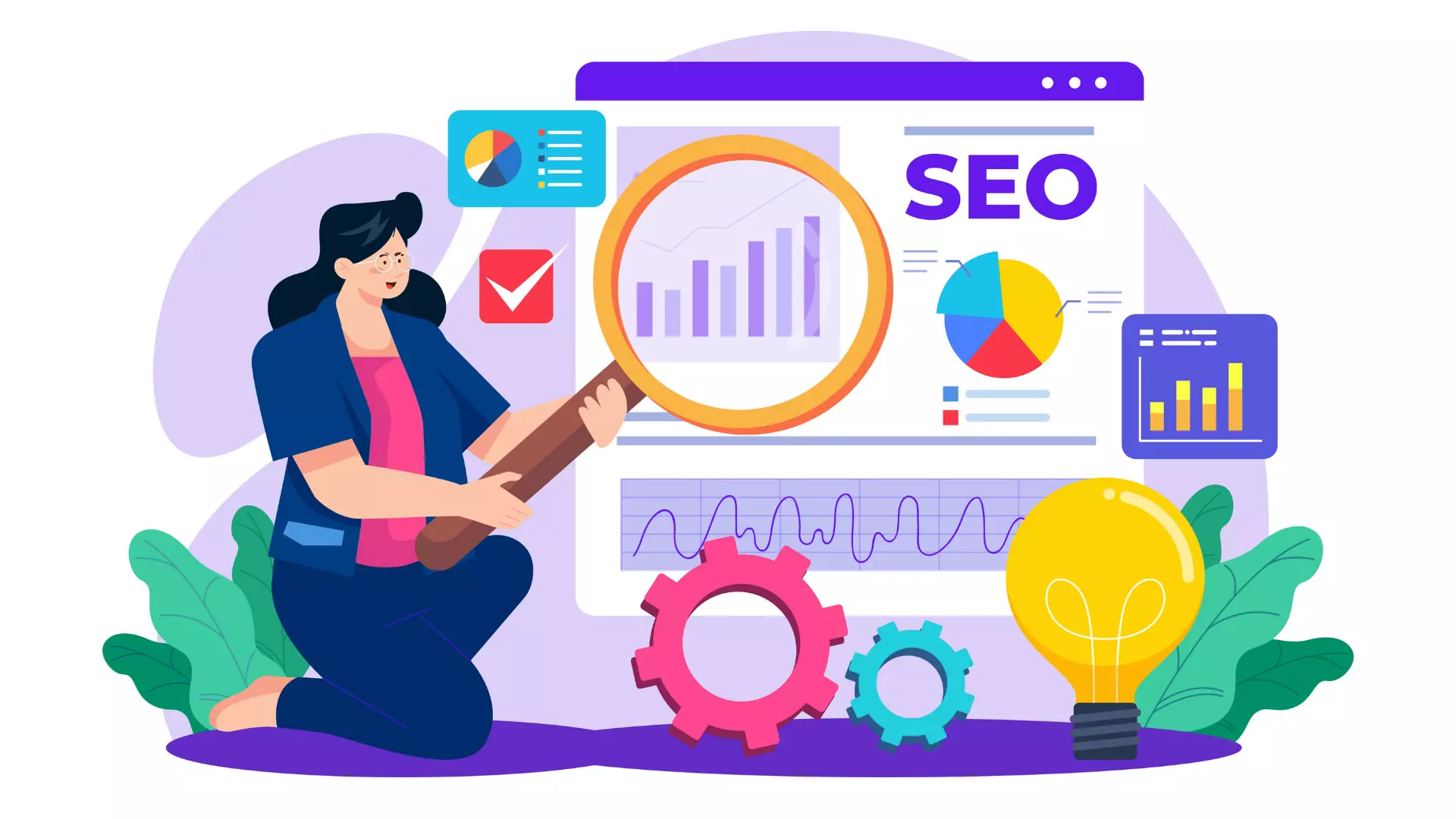
Google SEO for Etsy Sellers
Our last article talked about Etsy SEO and how it affects you as a seller. Generally speaking, having your products at the top of Etsy search is one of the best ways to increase sales without spending money. However, Etsy search falls short in that people must first go to Etsy before it delivers results. Driving organic traffic – the traffic you don’t have to pay for – to your product pages is easier if you also do some Google SEO.
It’s easy to think that Etsy SEO and Google SEO are interchangeable or that optimizing for Etsy is enough for Google. However, there are enough differences between the two sites that you should consider Google when you write descriptions and create tags. This way, you’ll perform better for both Google AND Etsy. From there, you’ll have more chances to make a sale.
Here’s what you need to know.
Etsy Helps Sellers with SEO
On Etsy, it’s important to remember that the company makes money when you do. For this reason, despite all the rules and restrictions, it’s in Etsy’s best interest to help you sell products. In addition, Etsy needs to make its website a major destination for craft and vintage lovers everywhere.
For this reason, Etsy has a dedicated SEO team that works to get listings at the top of Google. They’ll work with both regular search results and the shopping section. Of course, in this case, Etsy works on behalf of all sellers, including your competition.
Luckily, even when Etsy gets a competing product ranked higher than yours on Google, you still can reap some benefits. That’s because Etsy is a major website with a good reputation, and this helps YOUR page perform better than it would otherwise. In other words, the competing product might rank higher, but yours will perform better than it would on many sites other than Etsy.
Finally, as the Seller Handbook points out, as a seller, you can’t do everything. Not only do you not have control over the rest of Etsy, but as an individual, you have fewer resources than the corporation. Therefore, your job is to do the best you can for your listings in a way that complements Etsy’s efforts.
How Etsy and Google SEO are similar
Both search engines give users a list of great matches to their query. To do this, they primarily look at factors like keywords and the quality of the material on each web page. Then, the algorithms determine what the reader is most likely to want. Here’s how it works.
Keywords make the world go round
Both search engines rely heavily on keywords. In fact, you’ll find that picking the right ones is critical to success. That’s because all search engines use keywords to categorize and sort pages on the internet or a particular site, including Etsy.
Similarly, keyword stuffing is a bad idea anywhere you go. Stuffing is an old-school technique where you use too many keywords in a small amount of text. In the early days of the Internet, this worked because there wasn’t much competition, and the algorithms were less sophisticated. Nowadays, keyword stuffing will work against you in most search situations.
Keywords need to be relevant
It’s sometimes tempting to add irrelevant keywords to your material in an attempt to get your products noticed. However, this is a bad idea. If Etsy users get results that are irrelevant, they’ll quickly move on to something different. In turn, this will hurt your other Etsy metrics and more than erase any benefit you had from those keywords.
Similarly, Google incentivizes the right keywords. Strictly speaking, the algorithm often flags irrelevant keywords upfront, but some pages may slip through the cracks. In this case, the fact that readers won’t stay on that page for long will hurt SEO.
For these reasons, it’s critical that you choose the best, most relevant keywords for your products. You can still choose more or less competitive ones, but your choices should always fit your product.
Engagement is important
In marketing, the term “engagement” refers to someone reacting to content or a message. Engagement can look different depending on the page type and the website. For instance, sharing a page link is a kind of engagement, as is leaving a comment. For social media, engagement could also include a “like” or something similar.
For Etsy and Google alike, part of engagement is how long someone stays on the page (called “dwell time” on Google). Etsy also counts steps like adding the item to your likes list, placing it in the cart, or messaging the seller for more details. Either way, you should make your description into something that people want to read, analyze, and act on.
Tags and headings count
There are two ways that people add keywords to a page on both platforms. The first is your product description, and the other is your item title. As part of your description, you’ll also add tags like attributes and categories. In other words, any text on an Etsy page can help it rank in both search engines.
Key differences between Etsy and Google SEO
While it’s easy to think that both forms of SEO are primarily about keywords, you’d be wrong in assuming that everything is the same. One reason for this is that Google is mostly interested in delivering the most relevant results for each query. On the other hand, Etsy needs to deliver a great customer experience by highlighting products by sellers who meet the highest standards.
For this reason, Etsy and Google SEO have some significant differences.
Google lets you describe the pictures
On Etsy, your picture descriptions don’t count for SEO. In fact, the website doesn’t even let you show a name for the pictures. However, you can name the picture file whatever you want, and Google will pick up that name. This presents you with an opportunity to add keywords and have your picture considered for SEO.
Etsy considers seller metrics
While Google mostly cares about how well people interact with your page, Etsy thinks about how well your shop performs overall. For instance, if you have a ton of good reviews and ship like lightning, this will help you get a coveted first-page listing.
On the other hand, Google does look at the quality of the content, such as how well it’s written. Therefore, you should write your descriptions carefully. Also, avoid duplications in your keywords for different sections of the listings.
Backlinks count for Google
If people link to your product descriptions, then this will help with Google SEO. That’s because Google considers backlinks to be an overall indication of page quality. Sharing also counts for engagement, so links are a double boost.
Sadly, we can’t do outbound links on Etsy, so the link effect only works inbound.
Going into vacation mode hurts you on Google
Lastly, Etsy experts have determined that vacation mode is hazardous to your Google SEO health. That’s because when you go on vacation, Google sees the page as being taken down. Then, they’ll de-index the page the next time Etsy page rankings get updated. You’ll stay off of Google search until the next update after your return.
Etsy keeps the page indexed but doesn’t show it until you return. People who have saved the page can still see it, though.
Google considers factors completely beyond your control
Finally, there are aspects of Google SEO you have no control over and never will. For instance, Etsy is a well-known site that’s been in business for over a decade. This counts favorably for SEO, whether you’re a seller or the site itself.
How to help your pages do well on both search engines
By far, the easiest way to optimize listings for both Google and Etsy is to choose keywords with both algorithms in mind. For instance, you can use an app like Toolsy to find the hottest products and the keywords that go with them. Competitive analysis is your friend on Etsy, as with most other e-commerce sites. Then, you can find ways to make your products and descriptions better.
Another thing you can do is optimize everything possible. While some options like headings and subheadings are unavailable in Etsy shops, your descriptions and tags are very important. Write every word carefully so your listing will be both compelling and SEO-friendly. Some marketing apps can help you with this.
Final thoughts
Etsy and Google SEO are different in many significant ways. In particular, there are factors that are important to each that the other ignores. On the other hand, many of the principles are the same. Both keywords and page performance are important to get the best ranking possible. However, the measures of performance are different between platforms.
Ultimately, optimizing your pages with both sets of standards in mind is the best way to boost your position on results pages. Do your best to delight customers so they’ll leave good reviews and follow all seller guidelines. At the same time, do some off-site marketing to generate backlinks and engagement. After that, Etsy’s in-house team can do its best job for your products.



